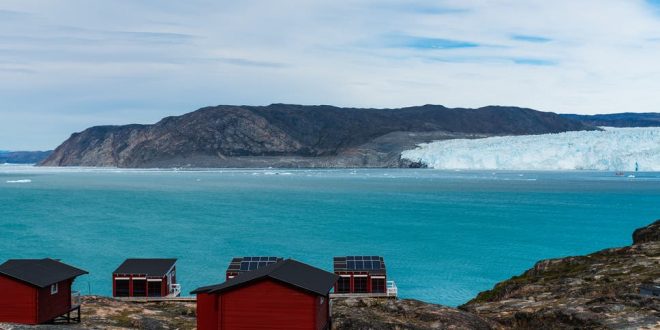Between 1994 and 2017 the Earth lost 28 trillion tonnes of ice and the rate of melting is accelerating rapidly, according to scientists who used satellite data and other models to detail for the first time the extraordinary total impact of the climate crisis on various bodies of ice.
The team of scientists from the Universities of Leeds and Edinburgh, and Imperial College London, studied the ice sheets in Antarctica and Greenland, glaciers across the world, and Arctic and Antarctic sea ice and ice shelves.
While the melting of floating sea ice does not directly contribute to sea level rise, the huge volumes of grounded ice in Antarctica and Greenland which have melted, as well as that from glaciers, have already contributed as much as 3.5cm to global sea levels between 1994 and 2017.
She said Greenland and Antarctic ice sheet melt could contribute 25-30cm to global sea levels by the end of the century under the “worst case” scenario outlined by the Intergovernmental Panel on Climate Change, while thermal expansion of the oceans due to warming could also raise sea levels further.
The Greenland ice sheet alone holds enough water to raise the planet’s sea level by 7.4 metres, while the total melt of all ice in Antarctica would raise sea levels by around 60 metres, according to Nasa.
As well as sea level rise, the melting of such extensive masses of ice pose other problems. All the ice stored in glaciers and in the ice sheets of Antarctica and Greenland are composed of freshwater, and when they melt and drain into the oceans, the huge volumes of freshwater then change the salinity of the seas.
The difference between the salt water of the oceans and the large areas of freshwater can be sufficient to prevent the seasonal formation of sea ice, and in some areas, to alter how established ocean currents interact.
“If this freshwater input causes a change in global ocean circulation – which some models have shown – then it could have consequences for the climate globally over a longer time scale.”
Previous studies have suggested changes to salinity could be responsible for a slowing down of currents such as the Atlantic “conveyor belt”, which brings the warm water of the Gulf Stream, and consequently a warm climate, to western Europe. Without it, winters in the UK could be around 5C colder, scientists have said.
In the latest study, the scientists reported that the majority of all ice losses were driven by atmospheric melting, with 68 per cent from Arctic sea ice, mountain glaciers, ice shelf calving and ice sheet surface mass balance.
The remaining 32 per cent of the losses were from ice sheet discharge and ice shelf thinning, which they said were being driven by oceanic melting.
Total losses:
Arctic sea ice – 7.6 trillion tonnes
Antarctic ice shelves – 6.5 trillion tonnes
Mountain glaciers – 6.2 trillion tonnes
Greenland ice sheet – 3.8 trillion tonnes
Antarctic ice sheet – 2.5 trillion tonnes
Southern Ocean sea ice – 0.9 trillion tonnes
The Independent
 Lebanese Ministry of Information
Lebanese Ministry of Information



